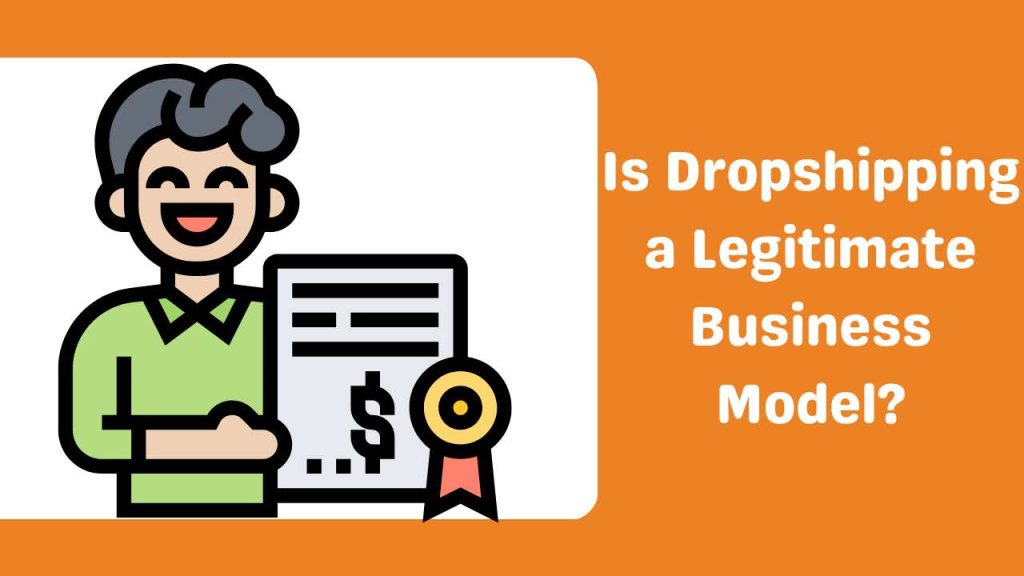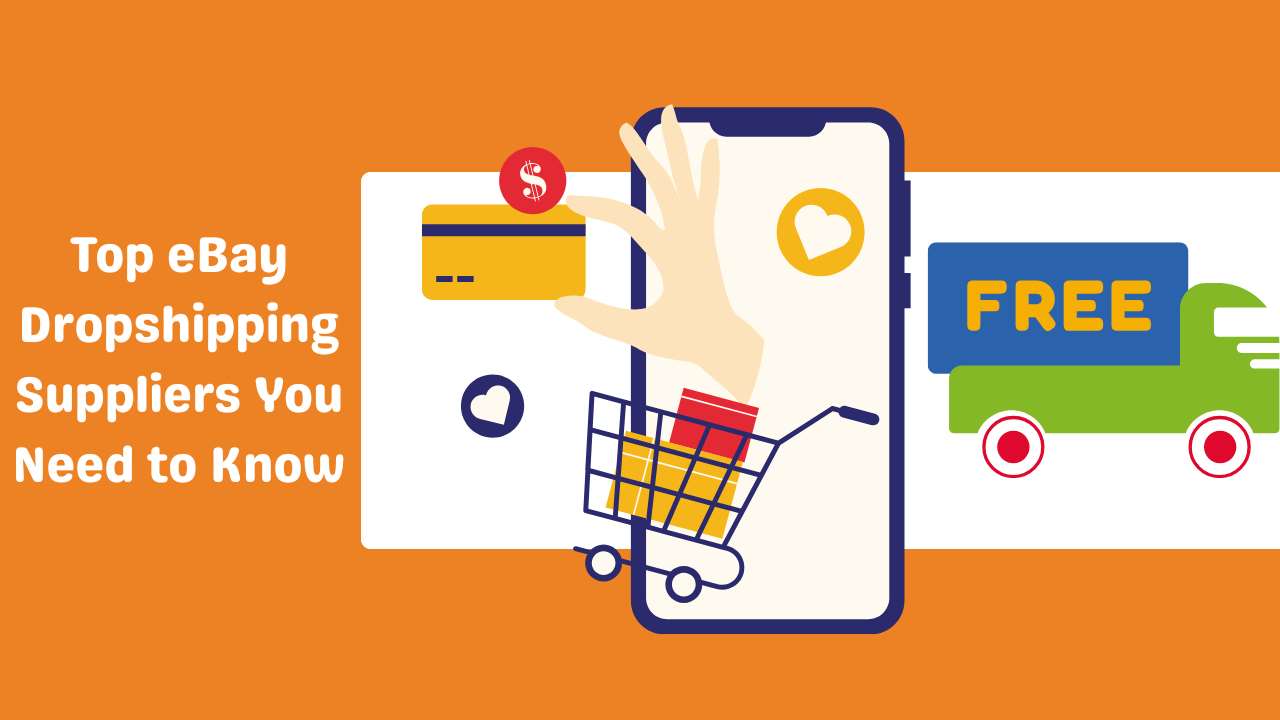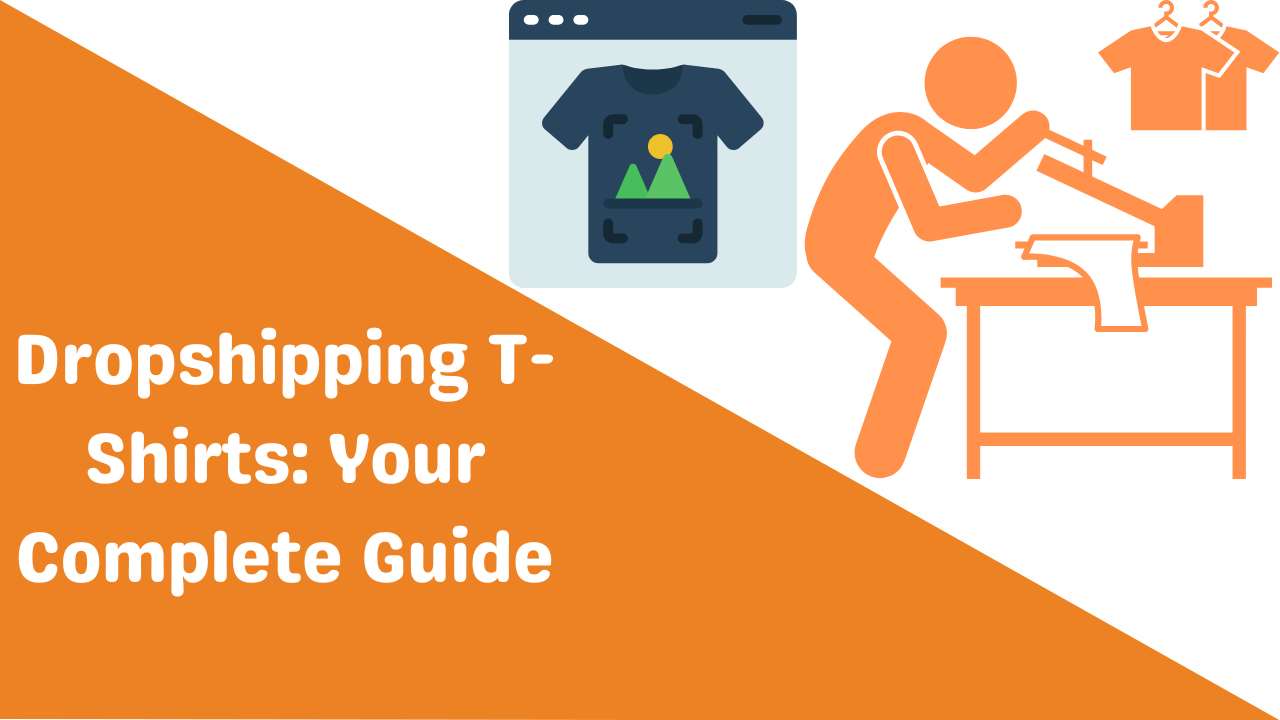Dropshipping has gained significant traction in the e-commerce sector in recent years, leaving many people asking, “Is dropshipping a legitimate business model?” Understanding the nuances of this business approach is crucial for anyone considering entering the market. This article will explore dropshipping in detail, addressing its operations, benefits, challenges, legal considerations, and effective strategies that can help entrepreneurs succeed. By the end of this article, you will gain insights that can inform your decision about diving into the world of dropshipping.
1. What Is Dropshipping and How Does It Work?
Dropshipping is a retail fulfillment method where a store doesn’t keep the products it sells in stock. Instead, when a store sells a product, it purchases the item from a third party and has it shipped directly to the customer. What’s the real story? This approach minimizes the risk for sellers, as they don’t have to invest in inventory upfront. Essentially, dropshipping allows entrepreneurs to run a business without the burdens of traditional retail overhead.
The mechanics of dropshipping are quite simple. When a customer makes a purchase, the retailer forwards the order and customer shipping details to the supplier. The supplier then packages and ships the product directly to the customer. This streamlines the process and eliminates the need for the retailer to handle logistics, inventory management, or fulfillment.
Understanding this business model is essential for any aspiring dropshipper. One of the key components is choosing the right suppliers. Reliable suppliers are crucial, as delays or poor product quality can lead to customer dissatisfaction. Additionally, successful dropshippers must carefully select a niche market to target, as competition is fierce in many industries.
In summary, dropshipping leverages technology to create a lean business model that many entrepreneurs find appealing. It lowers barriers to entry, making it easier for individuals to start their own businesses and offer products without significant financial investment.
| Aspect | Dropshipping Description |
|---|---|
| Inventory Management | No need for physical inventory |
| Order Fulfillment | Handled by third-party suppliers |
| Customer Interaction | Directly managed by the store owner |
| Startup Costs | Generally low compared to traditional retail |
2. Is Dropshipping a Legitimate Business Model?
As more entrepreneurs enter the e-commerce realm, the legitimacy of dropshipping comes under scrutiny. Critics often question whether it is a valid way to conduct business. But here’s the kicker: dropshipping is, indeed, a legitimate business model when approached correctly. It complies with legal standards and offers a viable path to profitability.
Dropshipping operates on established principles of retail, which means that as long as sellers adhere to laws regarding consumer protection, product quality, and return policies, they can establish a legitimate enterprise. As with any business, having strong ethical practices is crucial. Sellers must ensure that products meet quality standards and are shipped on time, as failing to do so not only affects a single transaction but can damage overall reputation.
However, there are misconceptions surrounding dropshipping. Some believe it is a “get-rich-quick” scheme, but that couldn’t be further from the truth. Success in dropshipping requires effort, strategy, and a solid understanding of the market. It’s imperative to invest in marketing, customer service, and supplier relationships to realize profits.
In essence, dropshipping can definitely be a legitimate business model, but success hinges on commitment, ethical practices, and strategic planning.
| Legitimacy Factor | Description |
|---|---|
| Compliance | Meets legal and consumer protection standards |
| Ethical Practices | Importance of product quality and service |
| Effort Required | Requires strategic planning and continuous effort |
3. What Are the Benefits of Dropshipping?
Dropshipping offers several compelling benefits that make it a popular choice for entrepreneurs. First and foremost, the low startup costs associated with dropshipping are one of its major advantages. Entrepreneurs do not need to invest heavily in inventory upfront, meaning they can enter the market with minimal financial risk. For instance, some dropshippers may start their business for as little as 500 by utilizing existing e-commerce platforms.
This is where it gets interesting: dropshipping also provides flexibility and scalability in operations. Entrepreneurs can run their dropshipping businesses from anywhere with an internet connection, making it ideal for those seeking a remote work lifestyle. Additionally, the scalability of dropshipping allows business owners to test new products quickly without the overhead costs associated with purchasing inventory. If a product doesn’t perform well, they can easily pivot without incurring substantial losses.
Another notable benefit is that dropshipping enables access to a vast product selection. Retailers can offer products from multiple suppliers and niche markets without the constraints of inventory. This can attract a broader audience, allowing for greater sales potential.
In conclusion, the benefits of dropshipping create an appealing business model, especially for individuals looking to launch an online retail business without the significant financial burdens of traditional models.
| Benefit | Description |
|---|---|
| Low Startup Costs | Minimal initial investment required |
| Flexibility | Operate from anywhere with an internet connection |
| Scalability | Easily test new products and pivot as needed |
| Vast Product Selection | Ability to offer a wide range without inventory |
4. What Are the Challenges of Dropshipping?
While dropshipping can be an attractive business model, it is not without its challenges. Understanding these can better prepare entrepreneurs for what lies ahead. One primary challenge is the intense competition prevalent in various niches. Since the barrier to entry for dropshipping is low, many sellers often flock to the same markets. What’s the real story? This can make differentiating one’s products and brand very difficult. It requires unique branding, quality marketing, and excellent customer service to stand out.
Another significant challenge involves reliance on professional dropshipping supplier. Since the retailer is not in control of the products’ quality or the fulfillment process, even a minor mistake by a supplier can lead to negative customer experiences. For example, if a supplier fails to ship a product on time or sends the wrong item, it can result in lost sales and damage customer trust. This is why vetting suppliers and implementing solid contingency plans is critical.
Additionally, managing customer service effectively can be a complex issue in dropshipping. Since dropshippers do not handle products directly, they must address inquiries and complaints without physical access to the items. This may require strong communication skills and excellent customer support systems to ensure customer satisfaction.
In summary, while dropshipping presents enticing benefits, it also comes with challenges that entrepreneurs must navigate carefully to achieve success in their business ventures.
| Challenge | Description |
|---|---|
| Intense Competition | Difficulty in standing out in crowded markets |
| Reliance on Suppliers | Risks associated with third-party fulfillment |
| Customer Service Management | Complex issues in managing returns and inquiries |
5. How to Start a Dropshipping Business?
Starting a dropshipping business can be a straightforward process, but it requires careful planning. First, aspiring entrepreneurs should decide on a niche they want to pursue. This decision is vital as it determines target customers, supplier relationships, and marketing strategies. Mix that with market research to identify demand and competition, and you are on the right track.
This is where it gets interesting: next, entrepreneurs must choose a reliable eCommerce platform. Platforms like Shopify, WooCommerce, and BigCommerce offer user-friendly interfaces and essential tools for building an online store. Each platform has its own set of features and integrations, making it crucial for sellers to evaluate which aligns best with their needs.
After selecting a platform, identifying reputable suppliers is a key step. Research potential suppliers on platforms like Runtoagent,AliExpress, Oberlo, or SaleHoo. It’s essential to conduct thorough due diligence to ensure they provide quality products, timely shipping, and excellent service. Building strong relationships with suppliers can enhance negotiation power and streamline operations.
Next, an effective marketing strategy is crucial for driving traffic to the dropshipping website. Employing digital marketing tactics, such as SEO, social media marketing, and content marketing, will help attract customers.
Finally, testing and iterating can provide insight into what works best. As dropshippers gain experience, they can adjust their strategies to optimize or expand their offerings.
| Steps to Start | Description |
|---|---|
| Choose a Niche | Focus on a specific market segment |
| Select an eCommerce Platform | Evaluate platforms for best fit |
| Identify Suppliers | Research and vet potential suppliers |
| Develop a Marketing Strategy | Plan and execute tactics to attract customers |
6. How Do Profit Margins Work in Dropshipping?
Understanding profit margins in dropshipping is critical for any business owner. Profit margin essentially represents the difference between the cost to acquire a product and the selling price. To put it simply, dropshippers typically aim for profit margins between 10% to 30%. However, what’s the real story? Factors such as product selection, market competition, and pricing strategies come into play when determining profitability.
In dropshipping, markup influences profitability. For example, if a product costs 30, the gross profit margin would be 33%. But keep in mind, this margin essentially reflects gross profit, as it does not account for other expenses like advertising, web hosting, or transaction fees that can significantly impact the bottom line.
Another point to consider is the competitive landscape. In saturated markets, margins may decrease as competition increases. Sellers often have to adjust prices to attract buyers, sometimes eroding their profit margins. Dropshippers must constantly adapt to changing market dynamics while ensuring they provide value to customers.
In conclusion, managing profit margins effectively is imperative for the success of a dropshipping business. It requires continuous analysis of costs, competitor pricing, and strategic adjustments to remain profitable.
| Profit Margin Overview | Description |
|---|---|
| Typical Margin Range | 10% – 30% |
| Factors Affecting Profitability | Product selection, market competition, pricing |
| Cost Considerations | Advertising, web hosting, transaction fees |
7. What Are the Best Niches for Dropshipping?
Identifying a profitable niche is crucial for the success of any dropshipping venture. First, successful dropshipping niches tend to cater to specific interests or problems consumers face. Some promising areas include health and wellness products, pet supplies, home décor, and eco-friendly items. But here’s the kicker: emerging trends often present excellent opportunities as well.
Utilizing market research tools like Google Trends, Ahrefs, and SEMrush can help entrepreneurs assess demand and competition in various niches. For instance, the rise of sustainable living has led to a growing market for eco-friendly products. Dropshippers in this niche can capitalize on the increasing consumer preference for environmentally friendly options.
Moreover, niche selection should consider personal interests. When dropshipping aligns with the seller’s passions, they are more likely to engage their audience authentically. This emotional connection can enhance marketing efforts and brand loyalty.
It’s essential to analyze not just the potential profitability but also the number of competing suppliers available. Too many sellers in a niche can lead to intense competition that might diminish profit margins. Conversely, niches with moderate competition may enable new entrants to establish a foothold and flourish.
In summary, determining the best niche for dropshipping revolves around assessing trends, personal interests, and market competition. Careful selection can position entrepreneurs for success in a competitive landscape.
| Niche Criteria | Description |
|---|---|
| Consumer Interests | Products that solve specific problems |
| Emerging Trends | Areas like sustainable living and health |
| Personal Engagement | Alignment with seller passions for authenticity |
| Competition Analysis | Assessing number of competing suppliers |
8. How to Market a Dropshipping Business?
Effective marketing strategies are vital for driving traffic to a dropshipping store. One of the most effective techniques is Search Engine Optimization (SEO). By optimizing product descriptions, blog content, and website structure, dropshippers can enhance their visibility in search engine results. This can lead to organic traffic, ultimately reducing the overall cost of customer acquisition.
Social media platforms are also indispensable for promoting dropshipping products. Engaging with potential customers on platforms like Instagram, Facebook, and Pinterest can foster community and brand loyalty. For example, posting compelling visuals of products and utilizing targeted ads can effectively reach audiences who are more likely to convert.
Email marketing serves as another powerful tool. By building a subscriber list, business owners can send targeted campaigns that promote new arrivals, special offers, and valuable content. It’s a strategy that allows for direct communication, keeping customers informed and engaged.
This is where it gets interesting: influencer marketing can provide considerable benefits. Partnering with influencers who resonate with the target audience can broaden reach and enhance brand credibility. Having influential users showcase products is a powerful way to encourage potential customers to make purchases.
To sum it up, successful marketing for a dropshipping business involves a multi-faceted approach. By leveraging techniques like SEO, engaging on social media, utilizing email marketing, and collaborating with influencers, entrepreneurs can build a robust marketing strategy that drives traffic and sales.
| Marketing Strategies | Description |
|---|---|
| Search Engine Optimization | Enhance visibility in search results |
| Social Media Engagement | Build community and brand loyalty |
| Email Marketing | Direct communication with customers |
| Influencer Collaboration | Partner with influential users for broader reach |
9. What Are the Legal Considerations for Dropshippers?
Navigating legal considerations is crucial when running a dropshipping business. One of the primary concerns involves compliance with consumer protection laws. Sellers must adhere to regulations related to transparent pricing, product descriptions, and returns. This protects consumers and helps build trust in the brand.
But here’s the kicker: tax obligations also play a significant role in legal compliance. Many dropshippers may be unaware of how sales tax applies to their business. Depending on where the seller operates and where customers are located, they may need to charge and remit sales tax. Understanding state tax laws is vital to avoid legal pitfalls.
Additionally, product compliance is a critical factor. Businesses must ensure that products meet safety standards and regulations relevant to their industry. For example, selling electronics may require compliance with specific safety certifications. This is not only important for legal reasons but also crucial for ensuring customer safety.
Creating clear terms and conditions and an engaging privacy policy is recommended as well. This documentation protects both the business and the consumer by setting expectations regarding the sale, shipping, and data privacy.
In conclusion, dropshipping involves various legal considerations that require careful attention. Compliance with consumer laws, tax obligations, product safety regulations, and robust terms of service are vital for running a legitimate and successful dropshipping business.
| Legal Considerations | Description |
|---|---|
| Compliance | Adherence to consumer protection laws |
| Tax Obligations | Understanding and collecting sales tax |
| Product Compliance | Ensuring safety standards are met |
| Terms and Conditions | Clarity regarding sales and customer privacy |
10. How to Choose Reliable Suppliers for Dropshipping?
Selecting the right suppliers is one of the most critical aspects of running a successful dropshipping business. A reliable supplier can make a considerable difference in product quality and shipping times. So, what’s the real story? It all begins with research. Conducting thorough background checks on potential suppliers is essential for ensuring they can meet expectations for reliability and quality.
The use of established platforms, such as AliExpress or Oberlo, can help dropshippers find reputable suppliers. These platforms often include reviews, ratings, and feedback from other users, which can provide insight into supplier performance.
This is where it gets interesting: asking suppliers for samples allows dropshippers to assess product quality firsthand. This can clarify what customers might expect when they order products, preventing disappointment and potential returns.
Another key point is to establish clear communication with suppliers. Droshipping relies heavily on a solid and communicative relationship. Sellers should ensure that suppliers can provide real-time updates on stock levels and order status. Communication can prevent potential issues before they escalate, enabling a smoother operational flow.
In summary, choosing reliable suppliers involves extensive research, utilizing established platforms, requesting product samples, and fostering open communication. These steps can significantly enhance the quality of dropshipping operations.
| Supplier Selection Criteria | Description |
|---|---|
| Research | Conduct thorough evaluations of potential suppliers |
| Established Platforms | Use platforms with ratings and feedback |
| Product Samples | Request samples to assess quality |
| Communication | Ensure clarity and responsiveness between seller and supplier |
11. How Can You Manage Customer Service Effectively?
Customer service plays a pivotal role in the success of any dropshipping business. Providing excellent customer support can lead to increased customer loyalty and positive reviews. One effective strategy is to build a comprehensive knowledge base where customers can quickly find answers to common questions. This can reduce the burden on customer service representatives and streamline support efforts.
What’s the real story? Implementing a ticketing system can also enhance customer service. These systems allow inquiries to be organized efficiently, ensuring timely responses to customer queries. Such systems can track and prioritize requests, helping ensure customers receive prompt assistance.
Additionally, communication is vital. Ensuring clear lines of communication can help manage expectations regarding shipping times and product availability. Informing customers about delays or potential issues can build trust and minimize dissatisfaction.
Another critical component is proactively seeking feedback. Encouraging customers to provide reviews or ratings can give insights into service quality. Responding positively to feedback demonstrates a commitment to improvement and can further engage the customer base.
In conclusion, managing customer service effectively requires a strategic approach that includes building resources, implementing support systems, maintaining clear communication, and actively seeking feedback. This emphasis on customer satisfaction can yield long-term benefits for dropshipping entrepreneurs.
| Customer Service Strategies | Description |
|---|---|
| Knowledge Base | Create resources for quick answers |
| Ticketing System | Organize inquiries for efficient responses |
| Clear Communication | Inform customers about orders and delays |
| Feedback Collection | Encourage and analyze customer reviews |
12. What Are the Risks Involved in Dropshipping?
Understanding the risks involved in dropshipping is crucial for mitigating potential issues. One significant risk arises from the dependence on third-party suppliers. Since the seller does not control inventory or fulfillment, delays or errors can occur, leading to customer dissatisfaction. This is where it gets interesting: maintaining strong relationships with reliable suppliers is vital to minimize disruptions.
Another challenge is managing customer expectations. In dropshipping, shipping times can vary based on the supplier’s location and efficiency. If customers cannot track their orders or if products take too long to arrive, it can result in negative experiences. Dropshippers must balance competitive pricing with expectations for fast shipping.
Moreover, market competition poses risks in terms of pricing and differentiation. As previously mentioned, dropshipping has a low barrier to entry, which often leads to many sellers targeting the same niche. This situation can compress profit margins and lead to price wars that erode profitability.
In summary, dropshipping carries several risks, including reliance on suppliers, customer service challenges, and intense competition. By understanding these risks, entrepreneurs can develop strategies to address them and set their businesses up for success.
| Risk | Description |
|---|---|
| Supplier Dependence | Risks from third-party fulfillment and delays |
| Customer Expectations | Challenges in managing shipping and satisfaction |
| Market Competition | Pricing pressures and margin erosion |
13. Is Dropshipping Sustainable Long-Term?
The sustainability of dropshipping as a business model is a question many entrepreneurs ponder. While dropshipping offers an accessible entry point into e-commerce, it’s essential to evaluate its long-term viability. One benefit of dropshipping is its adaptability; business owners can easily pivot to new products, markets, or strategies based on consumer demand. But here’s the kicker: this flexibility also requires constant effort in monitoring market trends.
Consumer behavior is always evolving, and dropshippers must stay ahead of the curve. Identifying emerging trends and adjusting product offerings is essential for maintaining customer interest. Another consideration is environmental sustainability that is gaining traction. More consumers are conscientious about sourcing products, leading to a demand for eco-friendly options. Dropshippers who offer sustainable products can tap into this growing market segment.
Additionally, developing a strong brand presence can solidify a dropshipping venture for the long term. By focusing on quality and customer experience, sellers can retain loyal customers and minimize the risks associated with market fluctuations.
In conclusion, dropshipping can be sustainable in the long term if entrepreneurs remain adaptable, focus on trends, and prioritize customer loyalty. The landscape may change, but with strategic planning, dropshipping can maintain its appeal.
| Sustainability Factors | Description |
|---|---|
| Adaptability | Ability to pivot based on market trends |
| Consumer Behavior | Evolving preferences toward sustainability |
| Brand Loyalty | Importance of establishing strong customer relationships |
14. What Are Some Success Stories in Dropshipping?
Learning from the experiences of successful dropshippers can provide valuable insights. For instance, several entrepreneurs have found immense success by targeting niche markets. One notable dropshipping entrepreneur built a thriving business around fitness-related products, effectively combining their passion with market demand. By leveraging social media and influencer marketing, they were able to grow their brand rapidly and achieve a substantial revenue stream.
Another success story involves a dropshipper who focused on personalized products unique to specific events like weddings and graduations. By creating customized products that resonate emotionally with customers, they effectively differentiated their offerings in the market. Their use of strategic online advertising and exceptional customer service drove significant customer loyalty and repeat purchases.
Additionally, some dropshippers have successfully scaled their operations by implementing automation tools. By utilizing technology to manage inventory, process orders, and handle customer requests seamlessly, these entrepreneurs have freed up time to focus on growth strategies while maintaining efficient day-to-day operations.
In essence, success stories in dropshipping often highlight the importance of niche selection, innovative marketing strategies, and the effective use of technology. Entrepreneurs can learn from these experiences to cultivate their successful dropshipping ventures.
| Success Factors | Description |
|---|---|
| Niche Selection | Choosing targeted markets for growth |
| Innovative Marketing | Strategies to engage audiences authentically |
| Technology Integration | Utilizing tools for efficient operations |
15. How to Scale a Dropshipping Business?
Once a dropshipping business is established, scaling becomes the next major goal. Knowing how to expand effectively can determine long-term success. First, optimizing product offerings by analyzing sales data can help business owners identify high-demand items. By focusing on bestsellers, dropshippers can enhance their inventory and boost overall sales.
This is where it gets interesting: automating processes is crucial for scaling. Investing in software tools for order management, customer service, and inventory tracking can streamline operations significantly. Automating tasks not only saves time but also reduces human error, allowing entrepreneurs to concentrate on growth.
Another strategy involves exploring additional marketing channels. For instance, utilizing platforms like Amazon or eBay for selling can broaden reach and attract new customers. Expanding into new geographical markets can also yield favorable results, especially if the products cater to diverse consumer preferences.
In summary, scaling a dropshipping business involves optimizing product offerings, incorporating automation, and exploring new marketing channels. By implementing these strategies effectively, entrepreneurs can drive growth and achieve sustained success.
| Scaling Strategies | Description |
|---|---|
| Optimize Product Offerings | Focus on high-demand and bestselling items |
| Process Automation | Implement tools for managing operations |
| Expand Marketing Channels | Explore new platforms and geographical markets |
FAQ Section
Q1: What is dropshipping? Dropshipping is a retail fulfillment method where a store does not keep the products it sells in stock. Instead, when a store sells a product, it purchases the item from a third party and has it shipped directly to the customer.
Q2: How does dropshipping work? In dropshipping, the retailer takes orders from customers and communicates these to the supplier, who subsequently ships the products directly to the customer on behalf of the retailer.
Q3: Is dropshipping a legitimate business model? Yes, dropshipping is a legitimate business model when conducted ethically and legally, adhering to consumer protection standards and ensuring product quality.
Q4: What are the benefits of dropshipping? Benefits include low startup costs, flexibility in operations, easy scalability, and the ability to offer a wide range of products without the need to maintain physical inventory.
Q5: What are the risks involved in dropshipping? Risks include reliance on third-party suppliers, management of customer expectations, and competition in the market, all of which necessitate careful planning and strategy.







